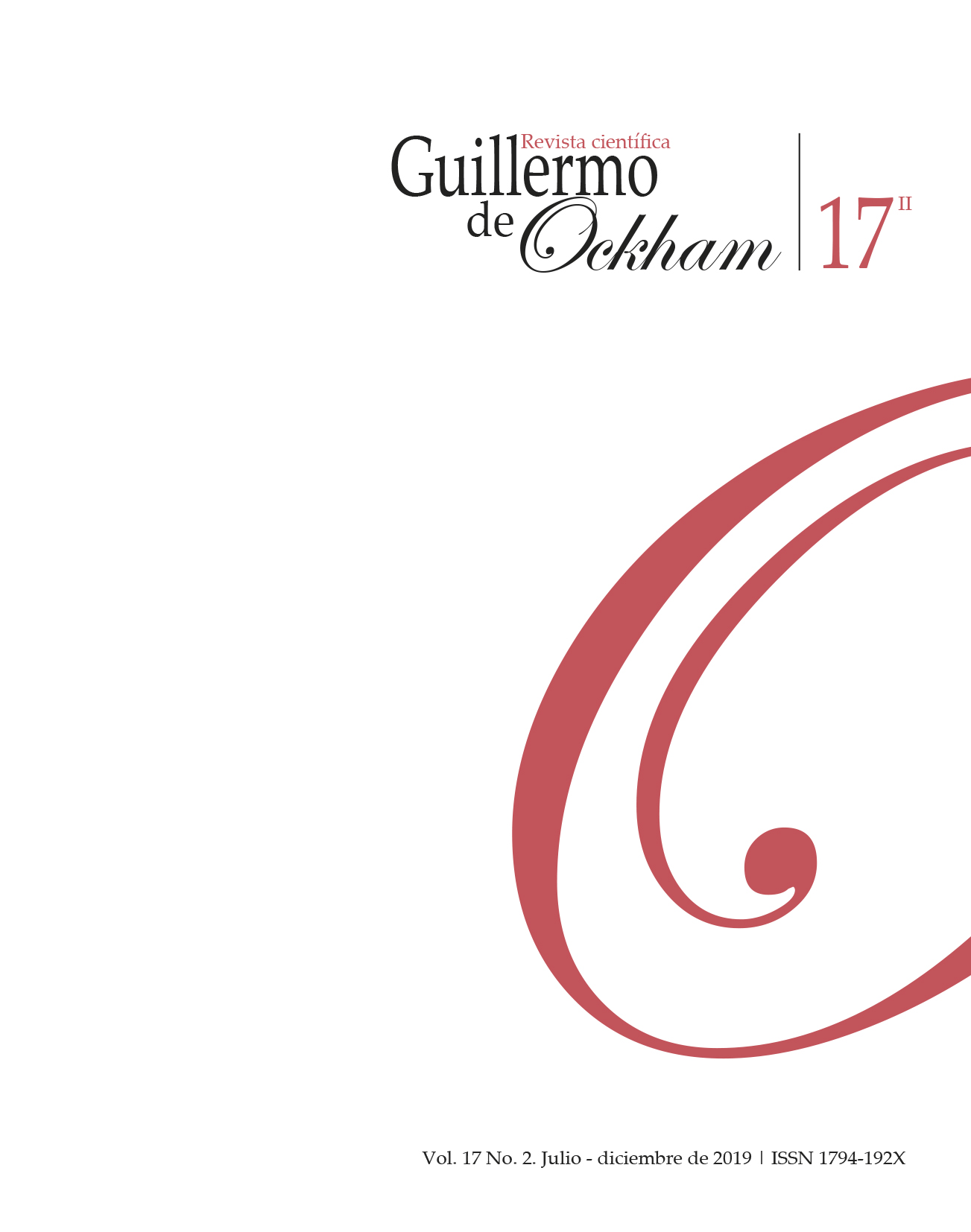The Revista Guillermo de Ockham provides an immediate and open access to its content, based on the principle of offering the public a free access to investigations to provide a global interchange of knowledge.
Unless otherwise established, the contents of this journal has a license with Creative Commons Attribution-NonCommercial-NoDerivatives 4.0 International (CC BY-NC-ND 4.0) http://creativecommons.org/licenses/by-nc-nd/4.0/
- Attribution: You must give appropriate credit, provide a link to the license, and indicate if changes were made. You may do so in any reasonable manner, but not in any way that suggests the licensor endorses you or your use.
- NonCommercial: You may not use the material for commercial purposes.
- NoDerivatives: If you remix, transform, or build upon the material, you may not distribute the modified material.
- No additional restrictions: You may not apply legal terms or technological measures that legally restrict others from doing anything the license permits.
Resumo
El empleo del derecho a la resistencia no tiende de alguna manera a realizar las aspiraciones populares, sino a defender o restaurar el orden establecido; por tanto, al reconocer el derecho de resistencia se pretende que sea un medio para que el príncipe reflexione y de esta manera hacerle respetar la legalidad. Por ende, el presente escrito, expondrá el pensamiento de Thomas Hobbes y John Locke estableciendo los posibles acuerdos y desacuerdos con respecto a sus teorías políticas especialmente el que acá concierne, a saber: el derecho a la resistencia































